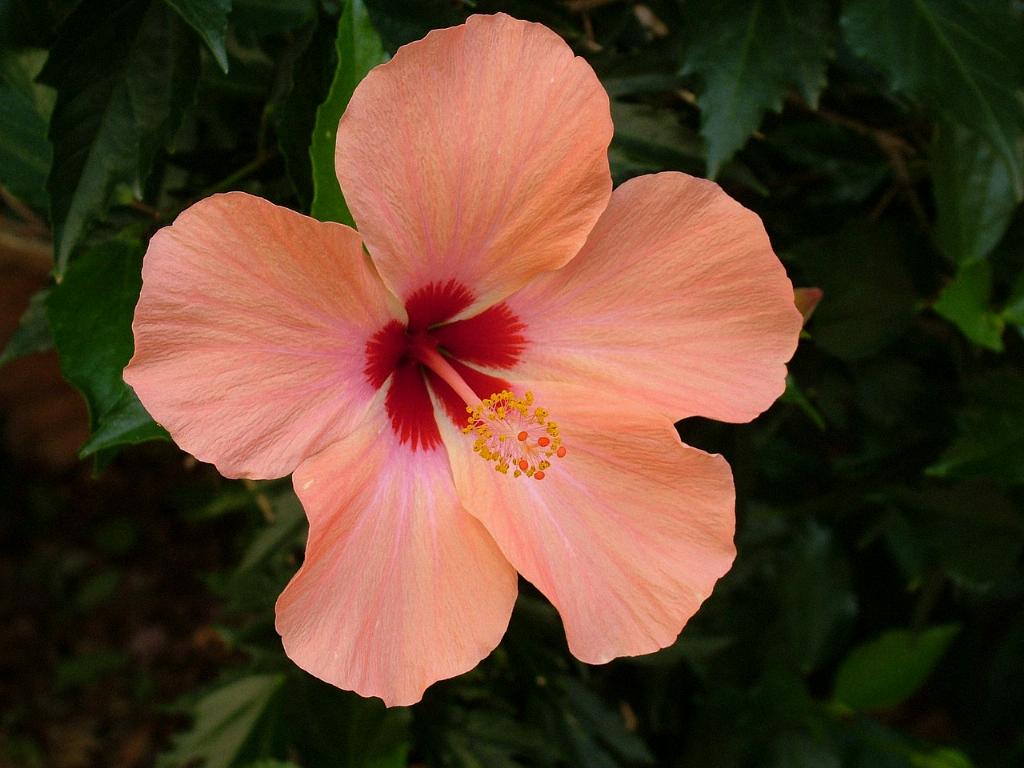Hibiscus, known scientifically as Hibiscus rosa-sinensis, is a striking flower that catches the eye with its vibrant, trumpet-shaped blossoms. Native to tropical and subtropical regions, this plant isn’t just about good looks; it’s also steeped in a rich tapestry of cultural significance and practical uses. Bright and bold, hibiscus flowers range in color from the deepest reds to the most delicate pinks, with some species even flaunting multiple colors on a single petal. It’s not just the flower that’s useful, though—the leaves and roots have been employed in various traditions for medicinal and culinary purposes. Given its broad utility and stunning appearance, hibiscus has captivated the hearts of gardeners and nature enthusiasts worldwide.
Types of Hibiscus: The Many Colors and Varieties
When we dive into the world of hibiscus, we find a plethora of varieties, each distinct in shape, size, and hue. From the popular Rosa-Sinensis to the native swamp Hibiscus moscheutos, garden enthusiasts are spoiled for choice. Each variant, whether grown for decorative purposes or therapeutic benefits, adapts uniquely to its environment, showing a remarkable resilience that makes hibiscus a favored choice among both novice and experienced gardeners. As each type has its own preferred climate and care requirements, picking the right type can make all the difference in the success of a garden.
Growing Hibiscus: Best Practices for a Thriving Garden
Thriving hibiscus plants start with understanding their needs—full sun, well-drained soil, and regular watering. Depending on your climate, hibiscus can be grown as a perennial or an annual, making it versatile enough to beautify any garden. Mulching helps retain moisture and protects roots in colder temperatures, ensuring your plant remains hearty through varying conditions. For those looking to grow these spectacular blooms, regular pruning is recommended to encourage fuller growth and more vibrant blooms. It’s a simple but rewarding process that keeps hibiscus plants healthy and floriferous.
Health Benefits of Hibiscus: From Tea to Natural Remedies
Hibiscus isn’t just a pretty face in the garden; it boasts a slew of health benefits that have been harnessed in many cultures for centuries. Hibiscus tea, made from the dried petals of the flower, is renowned for its high vitamin C content and potential to lower blood pressure. Its diuretic properties can also aid in reducing hypertension. Beyond tea, hibiscus extracts find their way into supplements aimed at managing cholesterol levels and boosting liver health. Its rich antioxidant properties make it a staple in health and wellness circles.
Culinary Uses of Hibiscus: Beyond Herbal Teas and Jams
While hibiscus tea might be the most widely recognized culinary use of the flower, its versatility in the kitchen extends far beyond. The petals, both fresh and dried, are edible and increasingly feature in exotic salads, desserts, and savory dishes that delight the palate while providing a burst of color. For the adventurous cook, incorporating hibiscus flowers into dishes offers a unique flavor that is both tart and sweet, making it a popular ingredient in gourmet cuisine worldwide.
Hibiscus in Beauty Products: Natural Skincare Solutions
The benefits of hibiscus extend into the realm of beauty and skincare, where its natural properties help rejuvenate and maintain healthy skin. Rich in AHAs (Alpha Hydroxy Acids) and antioxidants, hibiscus extracts are commonly found in facial scrubs, masks, and moisturizers, aiding in exfoliation and promoting a smoother, fresher complexion. Its ability to improve skin elasticity also makes it a go-to ingredient in anti-aging products, proving that this flower is as beneficial as it is beautiful.
Caring for Hibiscus Plants: Tips from the Experts
Expert gardeners often stress the importance of proper care for hibiscus plants to ensure they thrive. Ensuring adequate sun exposure and shielding from strong winds are pivotal, along with timely watering and periodic feeding with a balanced fertilizer. Monitoring for signs of stress or disease can help preserve the health of the plant, allowing it to produce opulent blooms regularly. Often just a little attention can go a long way in maintaining the vibrant beauty of hibiscus plants.
Pests and Diseases Affecting Hibiscus: Prevention and Treatment
Hibiscus plants can fall victim to several pests and diseases, including aphids, spider mites, and fungal infections. Early identification and treatment can prevent infestations from damaging the plants. Natural remedies like neem oil and insecticidal soaps can be effective treatments. Keeping the area around the plants clean can also prevent the onset of diseases, helping maintain a healthy garden environment.
Hibiscus Around the World: Cultural Significance and Uses
The hibiscus flower holds deep cultural significance in many countries around the globe—from symbolizing delicate beauty in South Korea to representing the perfect bride in Tahiti. Its usage varies widely, encompassing decorative, culinary, medicinal, and symbolic purposes, truly highlighting the global appeal and versatility of this exotic plant. The flower’s impact is felt widely, with its presence enhancing religious ceremonies, natural health remedies, and culinary arts worldwide.
Crafting with Hibiscus: DIY Projects and Ideas
For the crafty at heart, hibiscus offers an array of creative possibilities. From making natural dyes for fabrics to creating floral arrangements, the blooms and leaves provide a versatile base for many DIY projects. Pressing hibiscus flowers for scrapbooking or card making adds a touch of natural beauty to personal crafts, engaging hobbyists looking to bring a piece of the garden indoors.
Buying Guide: Where to Find Quality Hibiscus Plants and Products
Locating quality hibiscus plants and products can be as easy as visiting a local nursery or garden center. For a broader variety, online marketplaces offer various species and related products, ensuring you find exactly what you need for your gardening or culinary endeavors. Whether seeking a rare variety or common culinary items, the vast availability of hibiscus-related products caters to gardeners and chefs alike, meeting the growing demand for this versatile plant.

